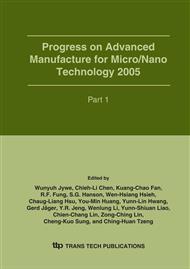p.883
p.889
p.895
p.901
p.907
p.913
p.919
p.925
p.931
Simulation and Analysis for Layout of Aerospace Sheet Metal Process with Lean Concept
Abstract:
Aerospace industry is a value-added and technology integrated industry. Sheet metal parts are important portion of aerostructures. The sheet metal production line combines five different routing types together. This study tries to make a comparison between job shop layout and cellular layout with lean concept. According to precedence diagram of sheet metal fabrication process, the model and measurement indicators can be constructed. The simulation software SIMPROCESS is then used to simulate the real-world cases under dynamic conditions. After the verification and validation process, we analyze the results that collected by simulation and provide the suggestions for the layout of aerospace sheet metal process.
Info:
Periodical:
Pages:
907-912
Citation:
Online since:
January 2006
Authors:
Price:
Сopyright:
© 2006 Trans Tech Publications Ltd. All Rights Reserved
Share:
Citation:


